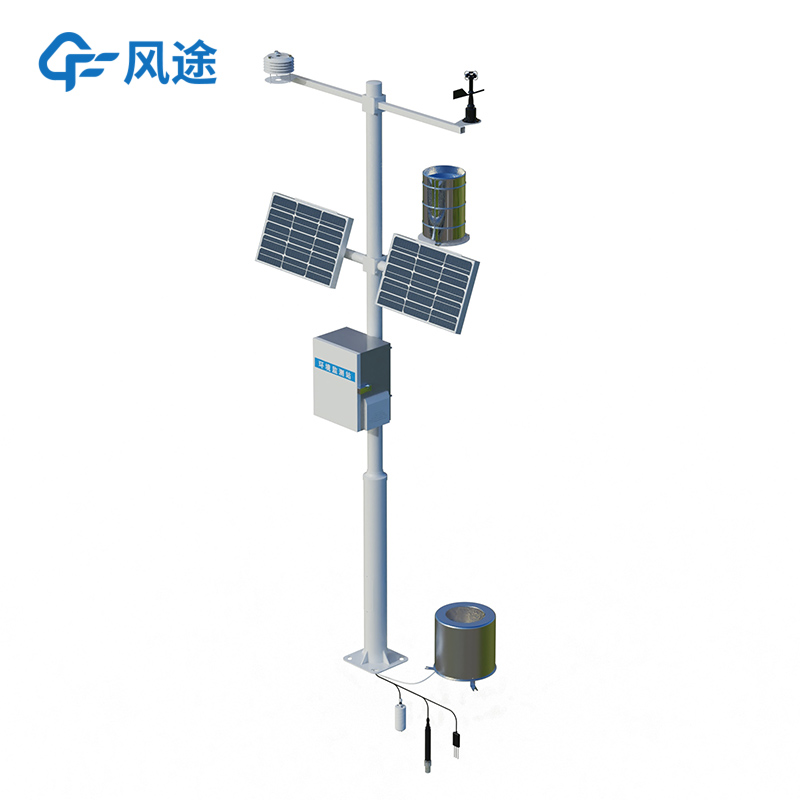Tianyi Sensor IOT Technology Co., Ltd
Sales Manager:Ms. Emily Wang
Cel,Whatsapp,Wechat:+86 15898932201
Email:info@fengtutec.com
Add:No. 155 Optoelectronic Industry Accelerator, Gaoxin District, Weifang, Shandong, China

Sales Manager:Ms. Emily Wang
Cel,Whatsapp,Wechat:+86 15898932201
Email:info@fengtutec.com
Add:No. 155 Optoelectronic Industry Accelerator, Gaoxin District, Weifang, Shandong, China
time:2025-09-25 08:54:02 source:Weather Station viewed:105 time
Modern agriculture is transitioning from extensive management to precision agriculture and smart agriculture. Data-driven decision-making is employed to achieve the goals of water conservation, fertilizer reduction, pesticide reduction, yield increase, and quality improvement. Meteorological data is one of the key foundational data sources, and only when combined with data such as soil moisture and crop growth can true intelligent management be achieved.
While data provided by national meteorological stations is authoritative, it has some limitations. A single meteorological station may cover a county or larger area and cannot reflect the unique microclimate conditions within small-scale areas such as an orchard or a high-standard farmland. As the saying goes, "the weather differs within ten li," temperatures and precipitation can vary significantly between the foot of a mountain and its peak. Special indicators that agricultural meteorology needs to focus on, such as soil temperature/moisture, leaf surface humidity, and photosynthetically active radiation, are often not provided in conventional weather forecasts.
Against this background, the Automatic Farmland Weather Station has emerged as a bridge connecting climate change and field management.
An Automatic Farmland Weather Station is a collection of devices specifically designed for agricultural environments such as farmlands, orchards, and greenhouses. It can automatically and continuously monitor multiple meteorological parameters that have important impacts on agriculture. It consists of sensors, data loggers, power supply systems, communication systems, and data platforms.
Features:
Fully automatic operation without manual intervention, with automatic data collection, storage, and transmission
Professional sensors provide reliable field microclimate data
Data can be transmitted in real-time to computers or mobile apps via wireless networks such as 4G/5G, LoRa, and NB-IoT
Monitoring indicators are closely aligned with agricultural production needs
It adopts a combination of solar panels and batteries to achieve green energy self-sufficiency, making it suitable for deployment in farmlands
Users can view data in real-time on computer web interfaces or mobile apps, generate historical trend graphs, and set alarm thresholds (such as automatic SMS/app notifications when temperatures are too high or soil is too dry)

In winter, there is frequent rain and snow, and road icing seriously affects the safety of pedestrians and vehicles. To address this issue, our company has launched the Road Ice Sensor. By adopting microwave electrical signal detection technology and equipped with a temperature compensation function...
As the impacts of climate change continue to intensify, the frequency and destructive scale of flood disasters are on the rise, posing severe threats to public safety and socio-economic development. Summer is inherently a high-risk period for disasters such as floods and droughts. To further enhance...
Wind speed and direction are important parameters in meteorological observation and environmental monitoring, and they play a significant role in many fields such as agricultural production, aerospace, and energy development. Accurate wind speed and direction data can provide strong support for disa...
The buoy-type online water quality monitoring system is a modern water body monitoring method. As an automated device for long-term and real-time monitoring of water quality, it is widely used in environmental monitoring of various water areas such as rivers, lakes, oceans, reservoirs, and aquacultu...